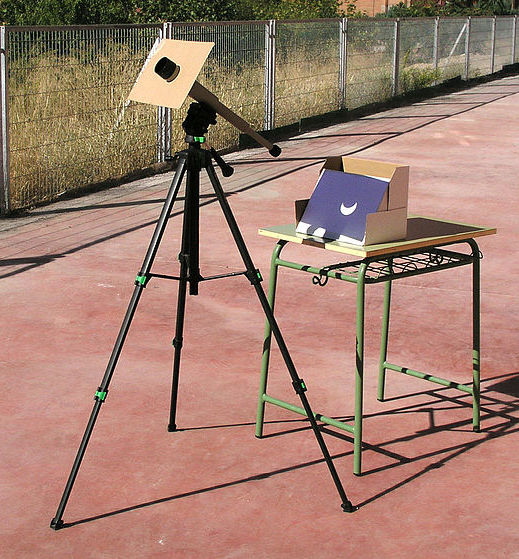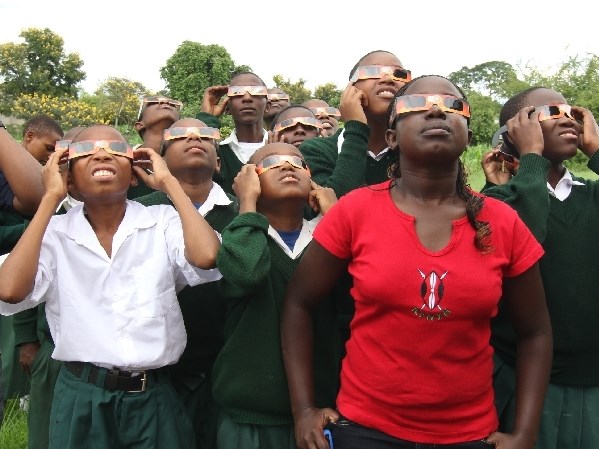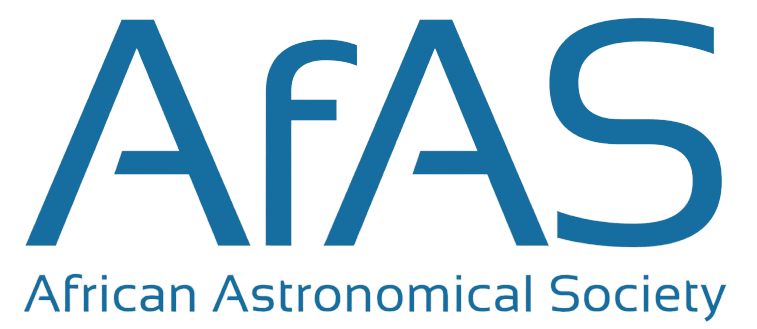TELESCOPE PROJECTION AND ECLIPSE GLASSES
Projection with telescope or binoculars
The best way to enjoy the eclipse is by projecting the sun’s image through a telescope or binoculars. If the image is projected from the eyepiece onto a piece of paper kept roughly 30 cm away, a beautifully focussed and magnified image can be obtained. It is perfectly safe to see this projected image on the paper. However, there are some precautions to be taken. It is crucial that the person in charge of the assembly make sure that no one, especially curious children, happen to come behind the eyepiece and look into it even by accident. This would result in blindness. There should be no plastic parts in the telescope or binoculars since these will melt in the heat.

Eclipse glasses
Specially made eclipse glasses by professional dealers are safe to use to see the sun directly for the entire duration of the eclipse. Such glasses should meet the international standard for ISO 12312-2:2015. These glasses have filters that cut down the visible sunlight by a factor of about 100000 as well as block the ultraviolet and infrared light. It would be difficult to obtain these glasses during the Covid-19 lockdown. Nevertheless, if you do possess them, inspect them to see if they have any scratches or damages and use them only if they do not. If you are sharing them, be aware of the risk of spreading coronavirus. It is not advised to disinfect them with chemicals.
Telescopes can be fitted with special solar filters on their front end, which makes them safe to see through. However, given the lack of availability of such filters, we will not discuss them further.

